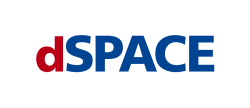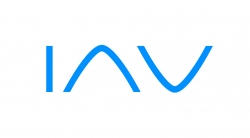Free-to-attend Innovation Showcase
Day 2: Wednesday, May 21
Hall 8 Wednesday, May 21, Hall 8 - Automotive Testing Technology International (ATTI) Forum 2025
Hall 10 Wednesday, May 21, Hall 10 - morning session
EDAG EDlight – AI-based testing of light functions
 Julian Metzger
Julian MetzgerProject manager
EDAG Engineering
Germany
Manual end-to-end testing of light functions in HIL systems or vehicles is a time-consuming task. The increasing complexity of light functions, such as adaptive driving beams, escalates testing efforts and the number of test cases. To address this challenge, Edag developed an innovative tool called EDlight. The core feature of EDlight is an AI-based image detection and classification system that enables fully automated testing of light functions. The test automation controls the lights, while a video camera captures the frames as input for the AI. After detecting the current state and ground truth, an automated report is generated.
What the audience will learn
- Automated testing of light functions
- Application of AI to check visual test results
- Applying transfer learning to image analysis tasks
- Advantages of AI in testing
- Insight into EDlight workflow
Modernizing control software testing of electric powertrain components
 Milutin Mitrovic
Milutin MitrovicAccount development lead
Typhoon HIL
Serbia
This presentation will talk about the change in testing requirements that transportation electrification brings with it. The transition from a hardware-defined vehicle to a software-defined one is taking place. Instead of internal combustion engines, which lose performance over time, the modern electric vehicle is based on agile development and continues to improve performance and functionality during the operational product maintenance. Increased and improved HIL testing of these components spans beyond the safety-criticality standards and drives opportunity to streamline improvements and enable a safe and ever-improving over-the-air update-based vehicle.
What the audience will learn
- Standardizing the tools for all powertrain component control software
- Improving efficiency of software teams by increasing collaboration
- Ease of use with a HIL platform
Enhancing test bench efficiency with real-time connection and self-learning AI
 Thorsten Huber
Thorsten HuberProduct manager
ETAS
Germany
This talk showcases the benefits of combining fast ECU access with self-learning AI methods. Automated self-learning of meaningful ranges for parameter variations helps improve the efficiency of test runs, while fast variation of parameters and instant reaction to limit violations improves stability and security at the benches. Combining both methods by flexible automation increases the benefits even more.
What the audience will learn
- Enhance test bench efficiency with self-learning AI methods
- New technology for fast real-time ECU access
- Efficient automation methods for measurement of modern powertrains
Next-level simulation artifact management – a centralized, tool-agnostic, one-stop shop
 Jannik Pflanzl
Jannik PflanzlProduct manager testing and data management
dSPACE
Germany
Transparency, collaboration and traceability are gaining more importance in development and deployment of simulation artifacts (e.g. models) due to the increasing global distribution of development tasks and the necessity of credible processes. With Artexa, the new dSPACE solution for web-based simulation artifact management, customers can now enrich the artifacts of various tools semi-automatically with metadata, upload them into the cloud back end and make them accessible to the whole organization via an intuitive web portal. This directly results in several advantages: increased efficiency of allocated resources, improved quality and credibility of simulation results and better collaboration and transparency.
What the audience will learn
- Benefits of web-based simulation artifact management
- Ease of worldwide collaboration based on cloud technology
- Introduction to Artexa as simulation artifact management software
High-precision vehicle dynamics measurements at Mercedes-Benz
 Kai Gilbert
Kai GilbertCEO
Sensoric Solutions Optic in Motion
Germany
Mercedes-Benz analyzes the smallest vehicle movements in order to perfect the driving characteristics typical of the brand. Hear how the slip angle helps with this and which sensors are used. One critical parameter in vehicle tuning is the vehicle's slip angle. This angle represents the difference between the vehicle's longitudinal axis and the velocity vector at a defined point of measurement. It provides valuable insights into tire and axle characteristics and general stability criteria. With advanced chassis systems such as rear-wheel steering, the measured slip angles can become very small. High resolution and accuracy are essential.
What the audience will learn
- Vehicle dynamics measurements at Mercedes-Benz
- Slip angle - how to measure
- What accuracies are possible
- Which technology is best suited for measuring the slip angle
- User-friendly operation and integration into existing systems
Test strategies for future battery systems
 Catharina von Appen
Catharina von AppenTechnical sales manager - Battery Test Center
DEKRA Automobil
Germany
The presentation will focus on the changes in batteries in terms of weight and size and the resulting requirements for cells, overall systems and their effects on battery tests. Topics addressed: batteries are getting bigger and bigger; cell to pack versus cell to chassis; shaker requirements for these new problems; requirements for battery systems are becoming ever stricter; implementation of the test using component bumpers within Dekra Crash Test Center; energy optimization on the test benches: the energy content is becoming larger and larger; development cycles in Europe.
What the audience will learn
- Changes in batteries and the resulting requirements
- Rapid development of battery systems and the resulting customized tests
- Stricter requirements demand innovative test methods (Dekra Battery Test Center)
Analyzing complex vehicle electrical systems
 Timo Eich
Timo EichBusiness development manager
CSM
Germany
In the future, the high-voltage electrical systems of EVs will be complemented by dual 12V/48V electrical systems. These significantly increase vehicle complexity and are a source of faults in the vehicle's power supply. Comprehensive diagnosis is therefore essential for the safe operation of electric vehicles. This requires analyses of voltages and currents in the low-voltage vehicle electrical system, including the consumers and voltage converters. In this keynote speech, CSM will show how the Vector CSM E-Mobility Measurement System can be used to solve these measurement tasks quickly, safely and precisely.
What the audience will learn
- Why multivoltage electrical systems add complexity to an EV
- An investigation of which values and phenomena are mandatory
- Which measurement tools allow extensive, multichannel tests in confined spaces
- How comprehensive bus and ECU data acquisition complements analog signals
- How to merge and synchronize measurement data from different sources
Wi-fi telemetry – game-changing revolutionary simplicity and maximum flexibility
 Dr Julia Manner
Dr Julia MannerDirector
Manner Sensortelemetrie
Germany
As a leading provider of inductive telemetry solutions, Manner has now overcome the challenges of battery-powered radio telemetry. Our latest wi-fi telemetry technology enables extended measurement periods without frequent recharging, thanks to an on-demand wake-up function. Designed for ultimate efficiency, it features energy-saving circuits and intuitive usability. Combined with a modular concept for flexible channel configurations, this innovation meets diverse user needs, delivering unmatched performance with Manner’s signature quality and accuracy.
What the audience will learn
- Manner overcomes battery-powered telemetry challenges with innovative wi-fi technology
- On-demand wake-up function enables extended measurement periods without frequent recharging
- Energy-saving circuits optimize efficiency and ensure reliable measurements anytime
- Modular concept allows flexible channel configurations for diverse applications
- Manner’s wi-fi telemetry combines highest precision with maximum user friendliness and flexibility
Hall 10 Wednesday, May 21, Hall 10 - afternoon session
IAV's way from testing facility to test bench provider
 Enrico Neumann
Enrico NeumannProduct manager
IAV
Germany
This presentation outlines IAV's successful transformation of test facilities from conventional to electric drives. IAV has converted combustion engine test benches into those for high-voltage (HV) drives and components. These facilities test all HV components, from onboard chargers to batteries, covering the full spectrum. IAV supports not only test execution but also the design and construction of test centers for clients. Initial projects with renowned OEMs and suppliers have been realized. With expertise in test technology and a deep understanding of devices under test (DUT), IAV aids clients in optimizing their test benches.
What the audience will learn
- Transforming a complete test facility for new era of mobility
- Lessons learned on the way to transformation
- Tackling regulatory and technical hurdles
- Way to adopt its business model to industry needs
Challenges and solutions in battery validation for electric and hybrid vehicles
 Dr Christian Miesner
Dr Christian MiesnerVice president, battery and cell testing
AVL
Germany
In the rapidly evolving hybrid and electric vehicle (HEV) market, battery technology stands at the forefront of innovation, driving the push for enhanced performance, safety and efficiency. As manufacturers race to develop superior battery solutions within increasingly compressed timelines, robust validation methodologies and adaptable testing tools become essential to ensure reliability and compliance across diverse global markets. This presentation will provide an overview of key regulatory frameworks and emerging technological trends in EV battery development. It will highlight the critical challenges faced by the automotive industry in battery validation and explore how a comprehensive toolchain approach can support engineers.
What the audience will learn
- Overview of key regulatory frameworks, emerging tech trends
- Toolchain approach to meet stringent performance and safety requirements
- Leveraging validation solutions to accelerate innovation
A fourth-generation diagnostic system
 Thomas Qiu
Thomas QiuManaging director
Windhill Technologies
Singapore
With the concept of new EEA and SDV, there are new requirements related to diagnostic systems, for example unified diagnostic data center, fast delivery time, flexible diagnostic architecture. Windhill provides full lifecycle solutions including diagnostic requirements management, data management, guided diagnostics, information management, release management, production EOL and after-sales tester, onboard tester and cloud tester. These solutions have already been used by some top Chinese OEMs.
What the audience will learn
- How to use AR/AI technologies in diagnostic systems
- How to apply ODX/OTX/XML for a diagnostic system's dynamic content
- Develop once and run everywhere including vehicle, cloud and tester
- Full lifecycle solution from requirements to tester
Masterclass: AI-driven test automation – the end of manual test case creation
 Patrick Stiller
Patrick StillerProduct owner AI assistant
Tracetronic
Germany
Automotive software testing is undergoing a major transformation. While test automation has become standard, creating test cases still requires significant manual effort. At Tracetronic, we leverage AI-driven test automation to change this fundamentally. With an AI-powered assistant, we are already generating test cases automatically and integrating them into existing test workflows. However, this journey comes with challenges: what technical hurdles did we overcome? Where are the current limitations – and what is still possible? In this session, we will showcase how AI-driven test case generation works in practice and provide insights into the future potential of AI in software testing.
What the audience will learn
- How to use an AI assistant to create test cases
- Technical and organizational hurdles in integrating AI into test automation
- Why AI not only improves efficiency but also enhances quality
- A glimpse of what is possible in the near future